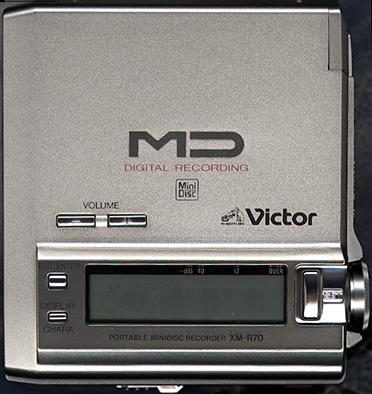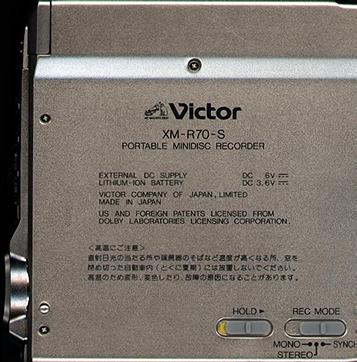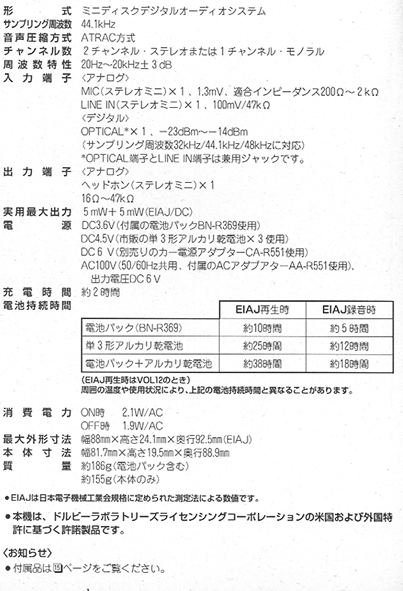


Technical Info page from the manual (Japanese only!)

You can see from here the battery stats in the table above, also the
power output etc.
Gabriel White, July 1999
Summary: A good simple functional unit. It does what it claims well enough with few gimmicks. It is small enough and has good battery life - up to 38 hours with battery pack attached. It looks OK and on the whole is a good competitor to other MDs on the market.
Trying to strike a compromise between the small but battery hungry, 'phantom problem' Sony R55 and the Sharp 821 good but not very exciting design and no jog wheel I decided to buy one of the first of the new JVC recorder units.
The unit is a solid, chunky looking slab sided unit. It won't win awards but is well laid out and functional without too many gimmicks. It feels well made though the clamshell closed with a rather flimsy feeling action. Overall the unit is slightly larger then the Sony and Sharp but is certainly nothing like the Sharp 722. The remote is again functional and square with a simple rocker button to advance tracks. A backlight makes it easy to use in the dark. All plastic components are made from a semi transparent black plastic.
The sound quality seems to me to be very good, a compromise between the clean but slightly too shiny and thin sound of the Sony and the big bassy sound of the Sharp which maybe lacks some of the delicacy of the Sony. The supplied headphones seem fine though can be prone to distortion with some bass sounds. Again they are made from semi transparent black plastic. The volume is not deafening and the power output is not really enough to drive some of the larger headphones such as my pair of Sennheisers, however it is sufficient with the earbuds. There is only one bass setting which I generally leave on.
The layout of the buttons is simple and on the whole the unit is very easy to use. The buttons are not as fiddly as the Sony and the very nice solid jog dial makes titling a snap. The jog dial is probably the biggest advantage over the Sony or Sharp, however it is only used for titling, not for changing tracks, though one has the remote to do this instead. Titling is simple and there is a good size display (10 characters), though after titling a track it stops playing (if you are playing a track at the time) and goes back to track 1 which is a bit annoying. In the pictures on the web it shows the main display being backlit which it is not, only the remote is which is a shame.
Battery life is very good, see this link for further details. It takes a couple of hours to recharge the Lilon battery. The external battery pack is a bit of a handful and hardly a great design though it does carry 3 AA batteries to give the unit a maximum of 38 hours playback time. The stop button also doubles as the charge button which in effect means that when you turn the unit off by pressing the stop button it starts charging when connected to the mains. DC in is 6V. I found it easier to buy a universal power adapter though the connector is non-standard in europe, than use the supplied power adapter/stepdown transformer (for the Japanese model).
Recording is simple with either mono, stereo or synchro recording possible. Recording levels are automatic but I believe (trying to read bits of English in the Japanese manual) that manual recording levels can be set too. There are various editing modes, join, divide, move which are all simple to use. It takes about 6-8 seconds to read the TOC. The analogue Line in uses the same socket as the optical one, with a separate microphone and headphone socket. All contacts on the unit, headphone remote etc. are gold plated which is nice
Overall this MD recorder feels very well made and I hope that it will
last me some time.